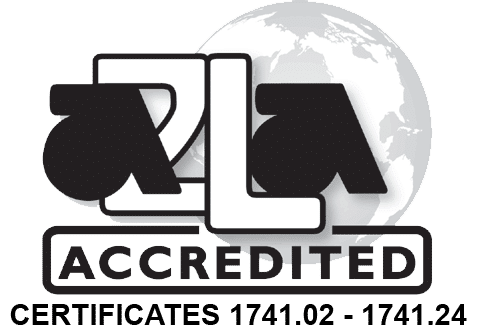10 Factors that are Impacting the Accuracy and Repeatability of Your Balance
Even if your balance is calibrated on a regular interval, there are several factors that could be impacting the accuracy and repeatability of your measurements on a day to day basis. The location and environment that your balance is used in can have an effect on repeatability –even if the location never changes. Being aware of and controlling these factors can ensure that you get reliable data from your balance every time.
It may be impossible to eliminate all of these factors in your lab, but being aware of them can help to prevent accuracy and repeatability issues. At Cross we have a team of experts who can help you to find the right balance or scale for your application and help to ensure you are operating it in an optimal environment. Contact us today to learn more!
- Air Flow: When placing your balance be aware of its location in relation to doors, open windows, and air vents. A sudden draft or breeze can affect your measurement. You can help to control this both through careful placement of your balance as well as the use of a draft shield.
- Environment: The ideal environment for operating your balance is 20°C/68°F with 50% relative humidity. When placing a scale into a new environment, you must allow it to “soak” in the area to adjust to the ambient temperature.
- Cluttered Work Space: Balances operate best in a work space clear of clutter. You should make sure nothing comes into contact with your balance. Anything touching or rubbing your balance can alter your measurements.
- Vibrations: Did you realize that just walking through the room might have an impact on your measurements? If you balance is in a work space with regular foot traffic, you may want to consider moving the balance to reduce vibrations. As a rule, the corner of the room is less impacted by vibrations than the center. You may also need to cut down on or eliminate traffic while the balance is in use. Analytical and micro balances should be placed on a granite platform or weighing table with vibration isolators for added stability.
- Slope: For your scale or balance to work properly, it must sit on a level surface. These devices are designed to weigh assuming that the load is applied parallel to the force of gravity and perpendicular to the weighing platform. (Learn more about slope’s impact on accurate weighing.)
- Improper Grounding: There are two ways that improper grounding is impacting your data. First, you must ensure that your AC source is properly grounded to prevent build-up of static electricity. Second, you should make sure the chassis is grounded to avoid electrostatic discharge.
- Plastic or Glass Weigh Containers: Speaking of electrostatic charges, plastic and glass weigh containers can hold an electric charge, while metal containers are less likely to do so. Static charges can result in drifting measurement readings or non-repeatable measurements.
- Magnets: Because some balances utilize magnets as part of the weighing system, placing your balance near equipment that is magnetic or weighing items that are magnetic can result in erroneous readings.
- Sample temperature: Earlier we discussed how the temperature of the environment can impact weighing; another consideration is the temperature of the sample you are weighing. This is specifically true for balances with a draft shield. If the sample is significantly warmer or cooler than the ambient temperature, it can result in airflow being trapped within the draft shield.
- Operator Error: This factor is a bit harder to eliminate. Because humans are involved in the process, there is always chance for error depending on anything from their training to the kind of day they are having. The best way to reduce operator error is to implement strict procedures and ensure your staff are properly trained on how to use your precision equipment.
It may be impossible to eliminate all of these factors in your lab, but being aware of them can help to prevent accuracy and repeatability issues. At Cross we have a team of experts who can help you to find the right balance or scale for your application and help to ensure you are operating it in an optimal environment. Contact us today to learn more!

